Carol Newman Cronin's Blog, page 19
April 21, 2022
Writing Habit: Morning is Best
Ever since I started taking my writing seriously, I’ve consciously labeled mornings as my most creative time. After a workout, I carry coffee and breakfast to my desk, fire up my computer, and build a new story. On the best days my brain is already fired up, and the words just—flow.
If I capture that morning spark, the rest of the day is usually more productive as well. If I sacrifice it to easier tasks—checking email, scrolling through social media—I feel like I’ve missed the boat. Who knows what scenes, characters, blogs, and context I missed on those mornings I was just too dang lazy to actually write anything?
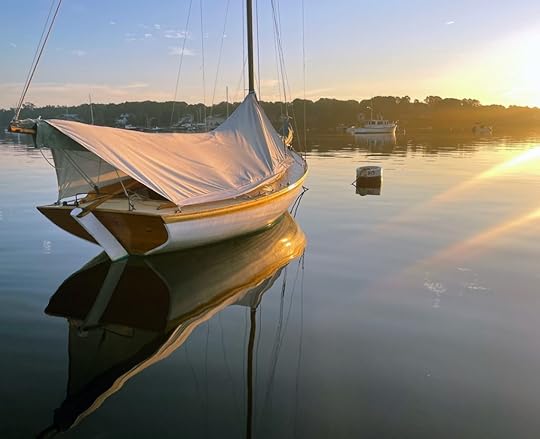
I’m sure there are chemical reasons for my morning-spark, but since chemistry was my least favorite subject in high school (and something I’ve avoided ever since) I am hardly qualified to cover that aspect. All I know is: my brain works better in the morning. That’s why I’ve learned to schedule editing and paperwork and client meetings after lunch whenever possible.
There are plenty of writers who do their best work after dark, perhaps with help from their favorite beverage. They have the same goal, approached from the opposite end of the day’s sobriety: freeing the semi-conscious, by getting all of those more urgent thoughts out of the damn way.
Though I’d like to better understand the science behind this personal quirk, all that really matters is understanding myself well enough—and then walling off those mornings from all the less creative stuff that also needs doing. I don’t know where my best stories come from; all I know is that getting them down onto the page is a lot easier at the start of my workday.
What about you? Got a preferred time for creative work? Share it in the comments below, or send me an email. I read every single one, with gratitude (though I usually try to wait until after lunch).
The post Writing Habit: Morning is Best appeared first on Carol Newman Cronin.
April 14, 2022
Learning from a “Spectacular” Death Roll
Last weekend, after rounding the windward mark in sixth in the puffiest, shiftiest breeze I’ve ever seen on Miami’s Biscayne Bay, Kim and I set the Snipe pole for another challenging heavy air run—a carefully honed yet instinctual ballet that includes shifting our weight both side to side and fore and aft, while steering and trimming sails to keep the boat planing over the waves rather than crashing into them.
One moment, all was fine. The next, our whisker pole hit the water—and the boat pirouetted around it onto its windward side, a classic death roll. (Here’s a photo of what this looks like.)
For those of you who are not sailors, “death roll” is a more descriptive and specific term for “capsize.” “A death roll is the act of broaching to windward,” Wikipedia explains, “putting the spinnaker pole into the water and causing a crash-jibe of the boom and mainsail, which sweep across the deck and plunge down into the water.”
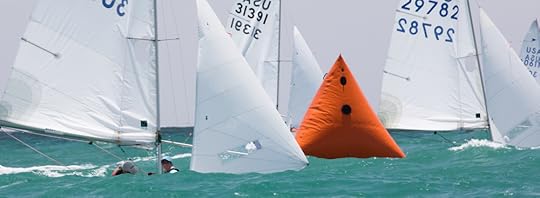 This is where the Snipe whisker pole “should” be when sailing downwind: holding the jib out to windward.
This is where the Snipe whisker pole “should” be when sailing downwind: holding the jib out to windward. Fortunately, the Snipe boom is high enough that it crossed well above our heads—but once the boat was on its side, we both fell into the water. That’s when Kim asked the perfect question: “Carol, are you all right?” —which simultaneously reassured me that she was all right, too.
Unlike my only other capsize as a Snipe skipper, I managed to pull myself around to the centerboard before the boat turtled, and eventually we righted the boat—into ear-splitting, sail-slatting, chaos. The pole had bent in two but it was also thrashing around, still attached to both jib and mast. And the jib had tied itself into an overhand knot halfway up the forestay. What a mess.
The next step was to get ourselves back onboard, but instead I got separated from the boat. Fortunately a support boat appeared, and after pulling me out of the water the driver transferred me back onto the Snipe. Once Kim pulled herself back onboard, we turned our attention to getting our sails under control again. The race was over for us, but we still needed to sail back to the dock.
Kim suggested tacking, and as soon as we got the bow through head to wind the jib somehow untied itself. She still couldn’t trim it in more than halfway because of that broken pole—but fortunately, our course back to the harbor was a reach rather than dead upwind.
After 12 years of sailing Snipes together, Kim and I no longer need to rehash the routine mistakes. But we always try to learn from new surprises, so on the sail back to the dock we had a frank discussion about where things went pear-shaped. Since we didn’t understand the cause and couldn’t come to any firm conclusions, we moved on to hashing out a plan for the next challenge: how to separate pole from jib so we could tack up the channel into the harbor.
None of our ideas worked, but somehow Kim managed to coax the double-bent pole around the mast without it doing any more damage. She also found a way to trim the jib sheet in enough to sail upwind. By the time we made it back to the dock, there were a few other broken boats already there; a good reminder that it had been a very tough day of sailing for everyone.
Thanks to a few key friends, we were able to replace our broken pole that afternoon (and also straighten our bent mast). On Sunday we posted two of our best finishes of the regatta, ending on a much better note—and leaving us both hungry for more.
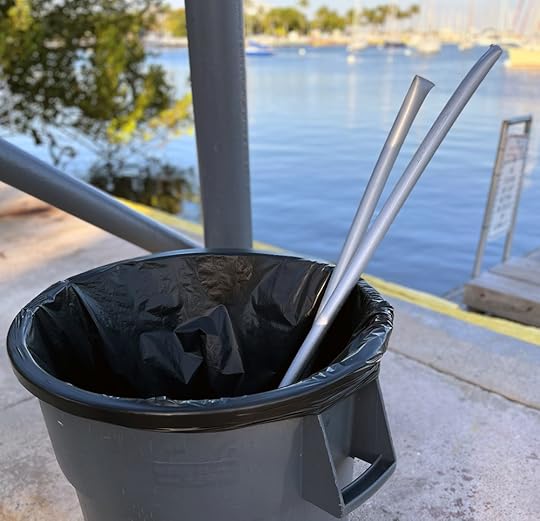
Even days later, after several discussions with other Snipe experts (which included the phrase “second most spectacular death roll ever”), I still cannot fully explain the cause. Augie Diaz was right next to us when it happened; he said we’d dropped into a very deep trough between two waves, which would’ve made it impossible to steer. I think we must’ve also had a simultaneous wind shift—but I’ll never know for sure. All I can do is try not to take Wikipedia’s words too personally: “During a death roll the [keel] boat rolls from side to side, becoming gradually more unstable until either it capsizes or the skipper reacts correctly to prevent it.” (Italics mine.)
Snipes are quirky boats, and even in my 32nd season (and 12 with Kim), I’m still learning their tricks. But adding “how to tack with a broken pole” to your list of skills probably won’t be much help in the future, so instead I’ll share some more general “hindsight’ thoughts from our experience—with the sincere hope that no one else ever has to experience quite such a “spectacular” death roll ever again.
1. Check on your teammate(s) first Boats and equipment can be replaced.2. Always carry a knife onboardand make sure it is sharp enough to cut through a high-tech line.
3. Talk through disasters afterwardto see what you can learn from them. (And if it was just a freak accident, don’t beat yourself up about it.)
4. Fitness is a safety featureKim and I would not have been able to manage the extra demands of righting the boat, swimming, and then self-rescuing ourselves and our broken equipment if we weren’t both aerobically fit. (Actually, she’s an aerobic monster.) You never know when you’ll need that extra stamina that only daily workouts will provide.
Sailing Snipes in big breeze is one of the most challenging things I’ve ever done, and all it takes is one freak wave for both loads and variables to escalate. I can’t wait for another chance to test my downwind skills—and here’s hoping I won’t need any of the lessons learned last weekend, ever again.
Got a “spectacular” capsize/death roll memory? Share it in the comments below, or send me an email. I read every one, with thanks!
The post Learning from a “Spectacular” Death Roll appeared first on Carol Newman Cronin.
April 7, 2022
The Gold Star of Writing Projects
I have a confession to make: for the past year, I’ve been “stepping out” on my next novel with a very different book.
When the Star Class first asked me in early 2021 if I wanted to help them write a history of 100 Years of World Championships, of course I said yes! Fourteen months later, I’ve successfully prioritized, polished, and pummeled a huge trove of interviews and history into ten chapters (one for each decade). And only now that it’s all assembled and off to the printer do I realize: most of the brain power I usually reserve for writing novels went into this project, even though I swear I didn’t make anything up.
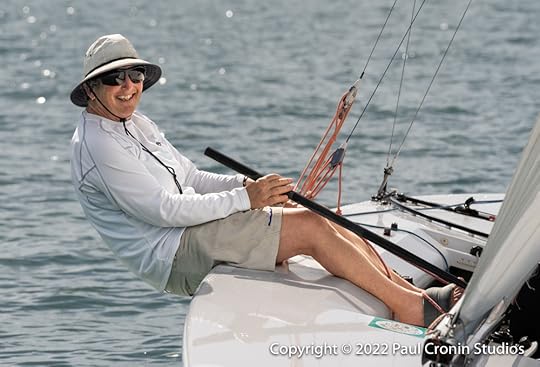
I assumed writing non-fiction would be much “easier,” since I didn’t have to create a rough draft. All I had to do was show each victory as part of a larger story arc—and I already knew where that began and ended.
What surprised me was how all-consuming it became. Though non-fiction, it’s still a book only I could write; right at the intersection of my weird collection of skills, Where Books Meet Boats. What other author would understand what it’s like to line up on a starting line, heart pounding, on the way to winning a World Championship—in a heavy, old-fashioned one design? Or how much fun it is to learn from and commiserate with a teammate, and competitors who are also friends?
Of course this project has also included other lessons I’d already learned before: how important personal enthusiasm is to writing well; the importance of first readers; how well my many skills all mesh together, given the right project; and last but certainly not least, how much I appreciate making my own schedule.
One completely unexpected bonus of writing this book was the chance to steer a Star myself—only the second time I’ve ever been in one. Fortunately this time, Paul was there to capture my excitement, and just how far the mast goes forward downwind.
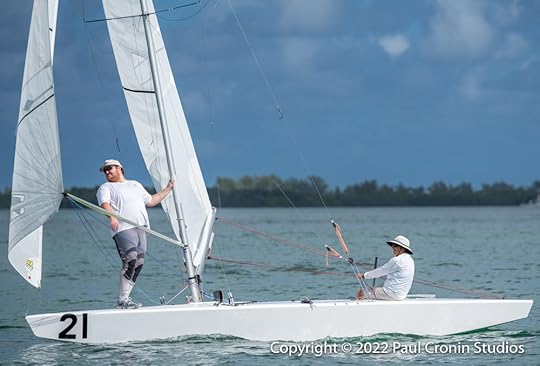
Right now it feels like all my previous writing (and sailing) was designed to prepare me for this project. And I have a feeling I’ll still be thinking about 100 Years of Gold Stars, long after it’s published—just like all of my previous books. So while I’m sorry I haven’t also made more progress on my next novel, I’m not going to apologize to it for “stepping out.” After all, once I get back to making things up—who knows how much richer the next story will be?
How about you: have you written something lately that was more distracting or time-consuming than expected? Share it in the comments below, or send me an email. I read every single one, with gratitude.
And for more photos of my lovely afternoon Star sailing on Biscayne Bay, as well as many other more deserving topics, visit Paul Cronin Studios.
The post The Gold Star of Writing Projects appeared first on Carol Newman Cronin.
March 31, 2022
Starting Strong with Robert Scheidt and Road to Gold
Over the past few months, I’ve seen the same wry comment attributed to three different pro sailors; “He couldn’t start a lawn mower.” They were all talking about different situations. And except for the pronoun, they could all be referring to my most recent Snipe regatta.
Starting sailboat races has always been my weakest skill. It’s the last thing to come back when I haven’t been sailing enough, and the first thing to leave when I’m stressed or out of sorts. It’s also the primary reason so many Olympic coaches have told me, “You should’ve steered in college.” All that repetition would’ve accumulated muscle memory that undoubtedly would still be serving me well, more than three decades later.
Well, here’s to woulda-coulda-shoulda. Nothing I can do about that now.
I’d been wondering what I could do to improve before my next regatta when the weekly Road to Gold email caught my eye: “Nail Your Start w/ Robert Scheidt, 5x Olympic medallist.” The time slot for this Live Coaching Call was Tuesday evening in the UK, so smackdab in the middle of an already over-scheduled work afternoon; nonetheless, I immediately added the webinar to my calendar. What’s the point of setting your own schedule if you can’t make time to improve on a personal weakness?

I last attended a Road to Gold webinar about a year ago, and since then hosts Andy Rice and Hamish Willcox have definitely polished their Zoom skills—while still keeping it as friendly and casual as the best after-racing conversations. Without letting unexpected technical challenges derail the process, they made sure to include live audience questions; that brought new faces onto the screen, breaking up any possible “talking heads” monotony.
Robert Scheidt is, of course, a sailing legend. He’s won five Olympic medals and twelve Worlds in the Laser and Star classes. When the Star was dropped from the Rio 2016 Games, he stepped back into the very physical Laser and, at age 43, finished fourth—the leather medal. In 2021, he finished eighth. He claims that his Olympic career is finally over, but who knows how many more medals he could win if the Star ever comes back?
The Road to Gold format allowed Robert’s expertise to shine through without intimidating anyone else. Thanks to Andy and Hamish’s insightful questions and follow-up remarks, I felt like we were all just chatting over a beer after sailing—though our two hosts were definitely following the step-by-step method that is the backbone of Road to Gold. They’ve found the missing link between sailing’s finest and the rest of us; a chance to learn, as well as a reminder of how lucky we are to enjoy such great accessibility.
I’ve only fit in one Road to Gold session so far this year, but they’re happening every week—with equally impressive names sharing their particular approaches to our chosen sport. Andy is in the UK and Hamish is in New Zealand, so time slots vary. But each one-hour session is recorded, and subscribers can tune in whenever it’s convenient. Their weekly newsletter provides a free alert to the next Live Coaching Call.
Thanks to Road to Gold, I’m going to try out some of Robert’s favorite tricks at my next Snipe regatta. Stay tuned to find out how it goes—though I doubt anything I learned will ever be much help when trying to start a lawn mower.
The post Starting Strong with Robert Scheidt and Road to Gold appeared first on Carol Newman Cronin.
March 24, 2022
Forgotten Photos Spark Story
A few weeks ago, I had a chance to comb through Sailing World magazine’s photo archives with editor Dave Reed, who kindly offered to pass along anything that was relevant to the one-design classes I work most closely with. But after an hour and a half of searching through a mishmash of boxes, my favorite find had nothing whatsoever to do with one designs.
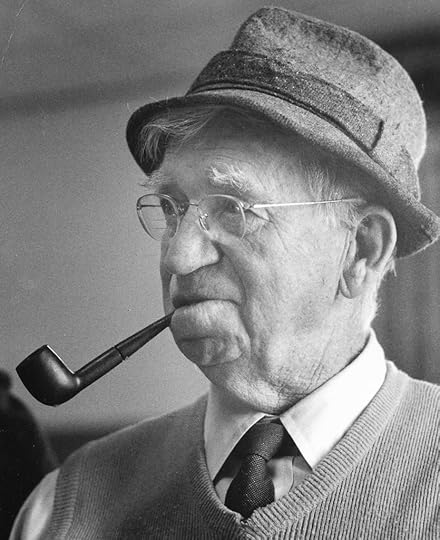 Sailing History Treasure Trove
Sailing History Treasure TroveNo task provides quite so much perspective as looking through decades of forgotten photos—especially if they were filed according to someone else’s thought process. Thumbing past folder names in the four boxes labeled “Famous Peeps” made me chuckle—because I’ve sailed with or against so many legends in our sport. Deeper dives were rewarded too, thanks to all those pre-internet Sailing World photo editors who’d labeled most of the images. Along the way, I paused to wonder just what creates a lasting impression; all the stories these headshots illustrated had long since disappeared into the fog of yesteryear.
I think of Dave as a contemporary, but he is five years younger—which meant that holding up a mis-filed sheet of age-darkened, double-spaced, dot matrix printing provoked only a shoulder-shrug. “My first stories to Sailing World looked just like this!” I told him, instantly transported back to those hope-filled days of mailed-in submissions, SASEs—and one font for everyone.
Lucky LabelIt was in the “miscellaneous Ns” folder that I found the unexpected treasure that graces this post. A square yellow post-it note on the back identified the salty guy as Aage Nielsen—a legendary designer of classic sailboats much admired by my father. Dave didn’t even recognize the name, and we both wondered why such an ancient photo would’ve been included in a 1980s issue (time-stamped by that post-it). A few days later, my dad solved this mystery; Holger Danske, the double-ended ketch that was the surprise winner of the 1980 Bermuda Race, was one of Aage Nielsen’s designs.
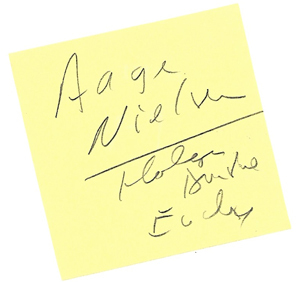
Combing through the Sailing World archives turned out to be a perfect example of a research rabbit hole that yields something completely different than what initially inspired the search. It was also a lovely trip down memory lane—and the spark for at least one blog. Images often inspire fresh stories, even though we think their sole job is to illustrate. Who knows what future inspiration will come from a morning of blind digging into sailing history?
Thanks Dave for the trip down memory lane—and for all those potential story sparks. Thanks to the rest of you for spending time with me while I share my meanderings, and please let me know what’s sparked your own memories lately. I read every comment and email you send, with gratitude.
More on Holger DanskeIf you want to read more about that 1980 Bermuda Race, crewmember Twig Burke wrote a remembrance on the 40th anniversary. On the docks in Newport, observers were not impressed with his ride:
“And when they came upon Holger Danske resting in port amongst a maze of yachts, they probably had her pegged for The Cooks Trophy, reserved for the last place finisher. That thinking had no place in the mind of young skipper Richie Wilson…he had a plan.”
Before the start, Twig continues, “. . . we were escorting the best-looking girl at the dance . . . wooden spars, flawless topsides reflecting off the water, and varnished cap rail and butterfly hatch gleaming in the morning sun…with young Wilson at the helm full of nervous anticipation. To the greyhounds in our midst, with their ‘too cool for school’ crews in their team uniforms, we were just road kill… ‘stay out of our way…we have a race to win!'”
The post Forgotten Photos Spark Story appeared first on Carol Newman Cronin.
March 17, 2022
Mark Reynolds: Gold Medal Guy
Last year, I interviewed a legendary sailor three times in six months—and I still came up with questions I forgot to ask. Mark Reynolds won three Olympic medals (two gold, one silver) in the Star class, and he also holds an impressive record; he’s competed in more Olympics in a row in the same discipline than any other American. All this while also building the sails used by most of his competitors! No wonder this particular profile suggestion met with an unusually enthusiastic response from Seahorse editor Andrew Hurst: “Outstanding idea. Wonderful guy and huge supporter of sailing.”
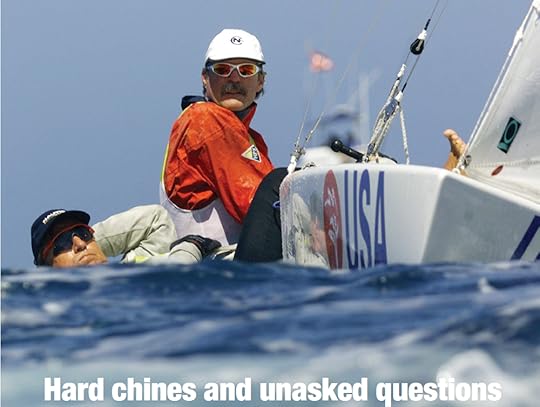
When I asked Mark for yet another interview, he graciously chatted with me (again) about how he got started in sailing and sailmaking. One of the best pieces of synergy was hearing about Mark from Augie Diaz and then hearing about Augie from Mark; together, they were the favorites to win the 1980 Flying Dutchman Trials. (Who knows what they would’ve won without that boycott?) Though that was a full decade before I met either of them, their memories of sailing together made it easy to picture the combined power of such youthful energy—and Mark’s glare from the wire whenever he didn’t agree with Augie.
Before I stop gushing and just let you read the piece, here’s another comment from Andrew Hurst that sums up Mark’s ability to be a regatta park friend, even to archrivals; “After Sydney 2000, Ian Walker told me he was glad it was Mark/Magnus that beat them, because without Mark they would not have known which end the jib went.”
Thanks, Mark, for making time to chat once again—and I look forward to hearing your answers to my unasked questions! For everyone else: don’t forget to subscribe to Seahorse, so you can enjoy Rod Davis and Blue Robinson and so many other fantastic writers who bring perspective to our sport from around the globe.
Mark Reynolds: Hard Chines and Unasked Questions
Previous Seahorse ProfilesDawn Riley: Setting the Standard
Clicks of Chance: Onne van der Wal
Just Say Yes: Stan and Sally Honey
Rod Davis: Why You Need His Wisdom in 2021
Rod Johnstone: An Amazing Legacy of Yacht Designs
A Final Conversation with Harry Anderson
Vince Brun Profile in Seahorse
The post Mark Reynolds: Gold Medal Guy appeared first on Carol Newman Cronin.
March 10, 2022
4 Lessons from a Year of “Countless” Profiles
In the past twelve months, I’ve written countless profiles of sailing stars. (Maybe by the end of this post, I’ll come up with the actual count.) You’ve already read several of them, courtesy of Seahorse Magazine; others are part of a larger project that I’ll be revealing quite soon.
By the numbers, multiple profiles might seem like writing the same thing over and over again. By the words, though, every single one is unique—because each interviewee has a distinctive voice. So here are four lessons learned from letting all those personalities shine through.
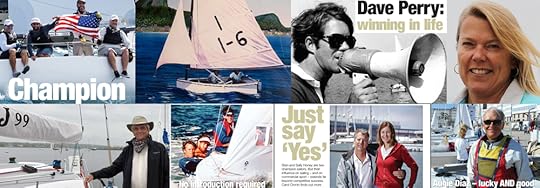 Lesson #1: Set the Scene
Lesson #1: Set the SceneWhether it’s a magazine piece or a novel, readers need at least a vague idea of “where” before they will follow me happily into “who.” Capturing a distinctive sense of place is obviously a lot easier with in-person interviews; when I sat down with Dave Perry at Yale Corinthian Yacht Club, we were “surrounded by walls full of trophies and photos”—and many included Dave’s name or face. For my conversation with Onne van der Wal, we enjoyed “lunch on the sunwarmed back deck of his house.” I even got to interview Rod Johnstone sitting in the cockpit of his latest boat!
Lesson #2: Don Your Invisibility CloakNobody is reading a profile to learn more about what I think. But it’s also rare (and, IMHO, dull) when the transcript reveals everything that should be included. The best stories are carefully assembled from a jigsaw puzzle of pithy quotes—maybe with a few pieces missing. The challenge is to identify an overall pattern, while keeping the sometimes time-consuming searches for key details out of sight. Imagine if every 20-year-old memory was backed up with something like, “it took me a lot of research rabbit holes to figure out that his results were exactly what he remembered.”
But read on for the flip side of this…
Lesson #3: Context is KingWriting a strong profile is not merely a matter of properly punctuating other people’s words and fact-checking their memories. My most important job is to supply context; why should the reader care about this person, who’s known for nothing more than winning “countless” sailboat races? The answer usually lies in a person’s history (what novelists call “back story”), which is why, even when I know someone well, my default first question is: how did you get started in sailing? I’m often surprised by a remembered detail, which might spark an unexpected link later on—or even provide a strong opening.
Augie Diaz is the most recent example. When I asked how he’d won so many regattas over 50 very competitive years, he replied, “I’ve been very fortunate.” When I sat down to write, all I could think of was: better lucky than good. But of course Augie is both; and thus was born a headline, Lucky AND Good, which was strong enough to survive the editor’s red pen.
Context also means filling in the blanks of what might remain unsaid; either because the person assumes I already know . . . or because they don’t want to talk about it! (Those are usually the most interesting rabbit holes of all.)
Lesson #4: Bookends are BestI get really annoyed when a piece I’m reading just… stops. I get it, because strong endings are a lot of work—but the key can usually be found in the opening paragraph. When in doubt, start by copying and pasting and then trying to reword it to incorporate what we’ve learned from the piece. Pro tip: if absolutely nothing at all has changed by the end, it might not be worth any further effort.
So, taking my own lesson to heart here: how many profiles have actually added up to “countless” over the past twelve months? The post-research quantitative answer is: 15. Which might not sound that impressive, until you realize that required about 1500 rabbit holes of research. And most of those facts will never be useful again—so thank goodness that, along the way, I also learned “countless” lessons that will help me write better profiles in the years to come.
The post 4 Lessons from a Year of “Countless” Profiles appeared first on Carol Newman Cronin.
March 3, 2022
Comodoro Rasco and Old Man: Appreciating Tradition
If the past two years have taught us anything, it’s a deep appreciation for traditions we used to take for granted. For me, the biggest change last year was the long strange sailing- and travel-free winter of 2021. So I was especially grateful to start off 2022 with one of my favorite Snipe events, Miami’s Comodoro Rasco—though it too has evolved since the heady “before-times” of 2020.
Manuel Rasco was Commodore of the Miramar Yacht Club in Havana, Cuba, in the 1950s; in 1969, Gonzalo “Old Man” Diaz started a regatta on Biscayne Bay so that Rasco’s “effort and dedication to Snipes will never be forgotten.” I only discovered this regatta’s magic a decade or so ago, when Old Man (then in his eighties) was still a competitor as well as the primary organizer—and, when needed, my personal trailer assistant.
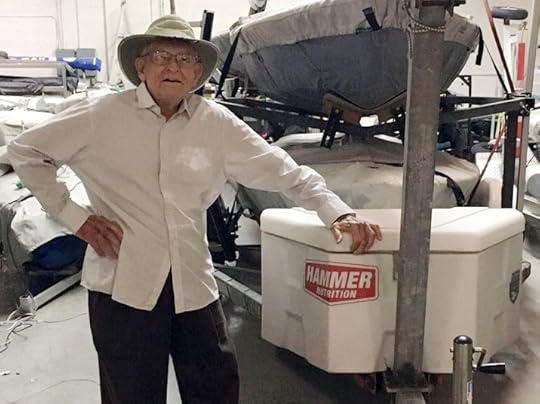
No matter what happened on the race course, what gave the Rasco its distinctive vibe was the lively Saturday evening dinner at Old Man and Carmen’s house. Sailors, race committee, and family members gathered together to share opinions about a wide variety of topics—with Snipe tactics, tuning, and transport the default small talk. It’s hard to imagine enjoying such a close inside dining experience now, but from 2012-2020 it was the only place I wanted to be on that particular Saturday night.
Over dessert, Old Man narrated a collection of Diaz home movies—with a great deal of audience participation, especially from repeat guests. We see Castro marching into Havana for the first time (1959), along streets lined with cheering locals. An eight year old Augie Diaz marches with a toy gun. Next is historic sailing footage: a quick view of Comodoro Rasco himself, standing on the foredeck of his impressive committee boat; Old Man and his brother Saul sailing a Snipe with no spreaders and a wood mast; and the annual audience favorite, Carmen kissing the Old Man after he won the Cuban Snipe Nationals.
Here’s a video taken in 2015 of that year’s performance; your humble narrator is one of the many hecklers. As I wrote in 2018, we hear “stories from Old Man about sportsmanship, sailing well, and finishing second (to Paul Elvstrom) at the 1959 Snipe Worlds.” (Read the 2018 regatta report)
Missing from that 2015 version is my favorite story from other years: how Old Man’s own “hero,” Dr. Inclan, insisted that Old Man drop out of a race after tacking too close to someone. Each year, as his audience grew younger, this story’s lesson became more and more insistent: we are lucky to be able to do penalty turns, rather than having to withdraw from a race when we break a rule. So let’s all do our circles!
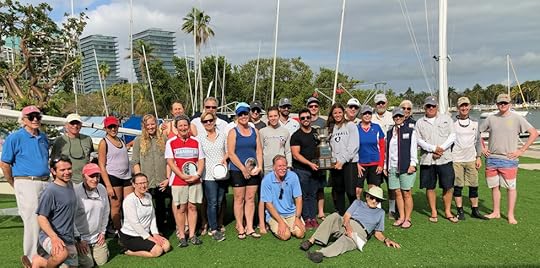
After missing the Rasco last year, I felt very fortunate to go sailing again on Biscayne Bay—despite a no-race Saturday (too much wind) and Sunday’s iguanas-dropping-out-of-trees cold. In thirty-two years of Snipe sailing, it was the first Snipe regatta I’d ever sailed out of Coconut Grove Sailing Club without the Old Man around the boat park—and my first Rasco that didn’t include a Saturday night gathering at the Diaz house, or the legendary singing of “La Bomba Va” after the awards. But both he and Carmen were definitely “there” in spirit, reminding us of what’s really important: to travel, to do circles, and best of all, to gather together and share memories with other Snipe sailors.
Old Man’s lessons have taught me a lot about Snipe sailing, but they’ve also proved something we should all take to heart: if we treat others with respect and follow the rules, we will be remembered long after we’re no longer sailing and traveling. So thanks to the Old Man for starting this special regatta, and to the Miami fleet for keeping the Rasco tradition going—even as it too evolves to fit a changing world.
The post Comodoro Rasco and Old Man: Appreciating Tradition appeared first on Carol Newman Cronin.
February 24, 2022
Rabbit Holes of Novel Research
Remember that famous quote from the movie Fried Green Tomatoes… “the secret’s in the sauce”? As a reader, what inspires and impresses me most is when an author drops one key detail into the middle of a narrative, without fanfare or fuss—and yet it has an enriching impact.
As a writer, I know how hard it is to come up with such a perfect piece of trivia—whether it’s made up or dug up. My own searches are both fun and frustrating; a kind of treasure hunt, except that I usually can’t even describe ahead of time exactly what “treasure” I’m seeking. I mostly know it when I find it, but even then its usefulness isn’t guaranteed. Sometimes such a detail will only reveal its importance a few months later—and it might even prove relevant to a completely different character or scene. What can I say, it’s not a very scientific process…
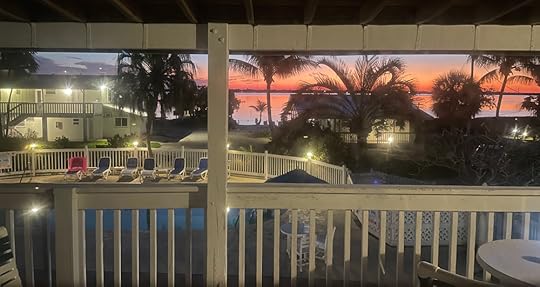
Though I dig up most of these details via internet searches, the best example involved actual travel. In 2016, while working on Ferry to Cooperation Island, I realized I couldn’t quite “hear” Courtney’s Eastern Shore twang—and none of the online recordings I dug up sounded quite right. I decided to make my first-ever dedicated fiction research trip to Oxford, Maryland, so I could listen in on the locals.
Wandering around the small town proved quite disappointing; most of Oxford’s current residents grew up somewhere else. But on one random morning beach walk, I spotted a not particularly distinctive oyster shell that instantly sparked a thought: “Courtney wears that around her neck, on a leather thong.” I picked up the shell and carried it home to my desk, where it continued to help me home in on what makes her tick—and why.
Most of my “rabbit holes of research” don’t lead to such inspirational happenstance; far too many end up in the trash file. But without this kind of digging, I’d never stumble onto the details that, carefully placed, will enrich the “secret sauce” of each story. And, I have to admit—even when they’re not successful, they’re a large part of what makes writing fiction so much fun.
The post Rabbit Holes of Novel Research appeared first on Carol Newman Cronin.
February 17, 2022
Olympics: 5 Ways Sailing is Exactly Like Curling
Of all the winter Olympic sports, I must admit: I love me some curling. And this year, I finally figured out why: it’s by far the closest thing to sailing at Beijing2022. Here are five things these two very different sports have in common—with apologies up front for any inaccurate curling terminology.
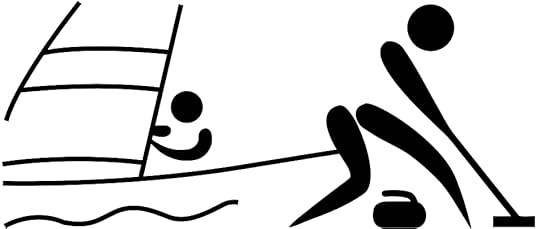 Images by Clker-Free-Vector-Images from Pixabay1. Both sports require a pre-start plan
Images by Clker-Free-Vector-Images from Pixabay1. Both sports require a pre-start planOne of the best things about having a very smart Snipe crew is our ability to hash out a plan together before each race starts. Combined with the onshore discussions we always try to have with other teams, we sail our best races when we develop a plan based on current conditions.
Though I barely understand most of what the Olympic curling teams say—even when they’re speaking English—I can appreciate the time they take to map out each shot. I also get that how they phrase things—and what they’re not saying—may be equally important.
2. Winning requires excellent execution…The best tactics and strategy won’t win anything if “your mind makes a promise that your body can’t fill,” as Little Feat put it in the Old Folks’ Boogie. Just as sailors practice tacks and jibes until they becomes second nature, each and every curler’s stone throw must be both extremely accurate and extremely consistent.
3. …but we don’t win by hundredths of a secondOne flubbed tack probably will not be a regatta-killer, just as one mis-weighted curling throw can often be corrected by excellent sweeping. (Another commonality: crews often have to clean up a skipper’s mistake.)
4. We sometimes slow down to winRounding a leeward mark in a crowd rewards those who can slow their boat down enough to avoid a big pinwheel. Curling is the only other sport I can think of where players sometimes choose NOT to score early in the game, in order to improve their long-term odds of winning.
5. Once in awhile, we get a lucky breakEvery so often, a lucky windshift comes along that—even though it has absolutely nothing to do with excellence in planning or execution—might send us around the weather mark ahead of everyone else.
And, every once in awhile, curlers make a shot that ends up even better than expected; taking out an extra opponent’s rock, or displacing a guard that might obstruct future shots. The way the athletes shake their heads afterward is identical to the look of grateful surprise that all sailors wear after taking advantage of an unexpected windshift.
Winter or summer, the 5-ring circus that is the Olympics focuses mostly on medals won by hundredths of a second—perhaps because those sports are easier for TV audiences to understand. Sailors and curlers both play a more cerebral game of inches. And though I’m not looking to trade my much-preferred soft water for their sheet of ice, I am watching closely and cheering on all of it: the planning, the execution, and of course the occasional lucky break.
The post Olympics: 5 Ways Sailing is Exactly Like Curling appeared first on Carol Newman Cronin.



